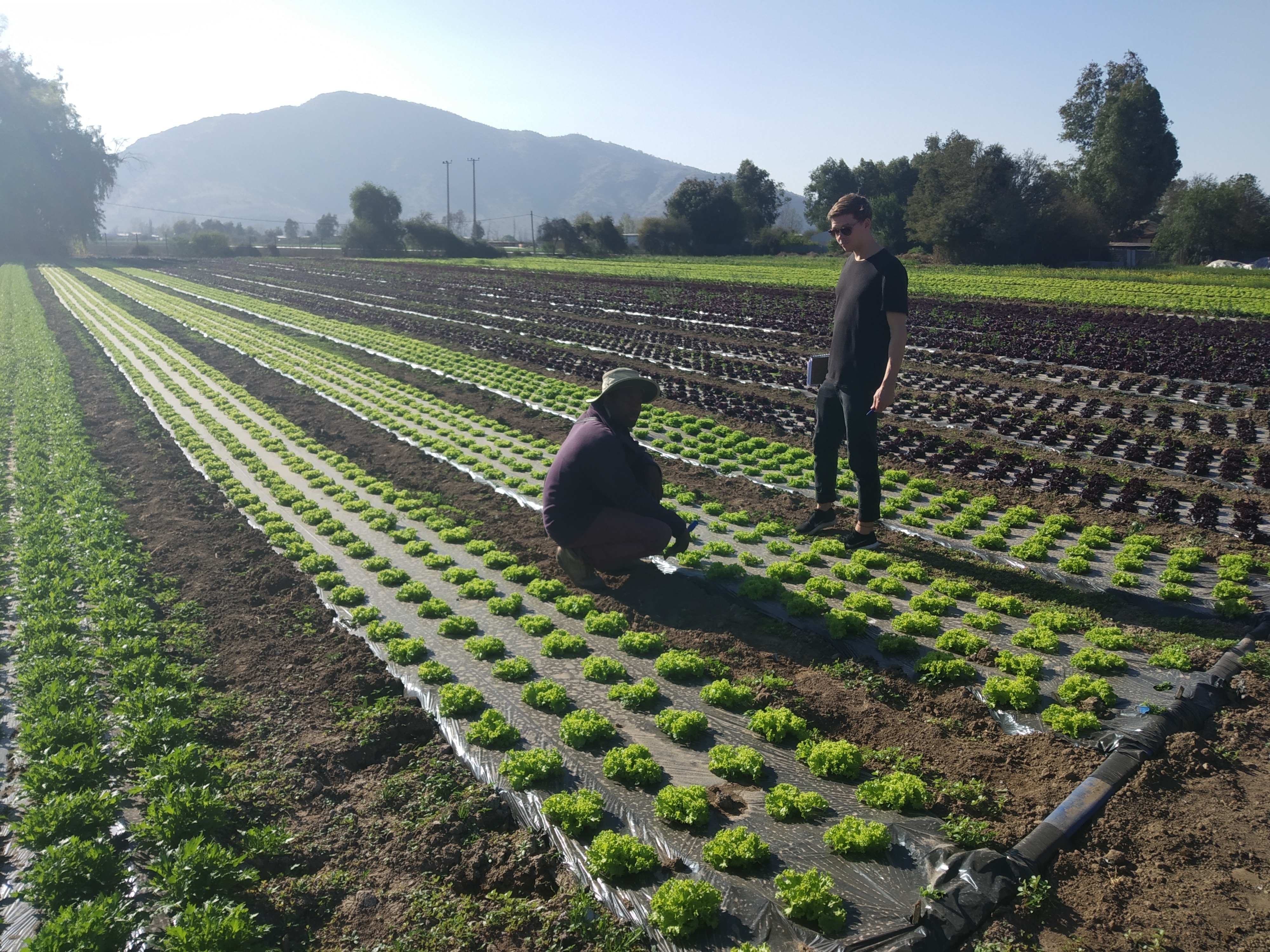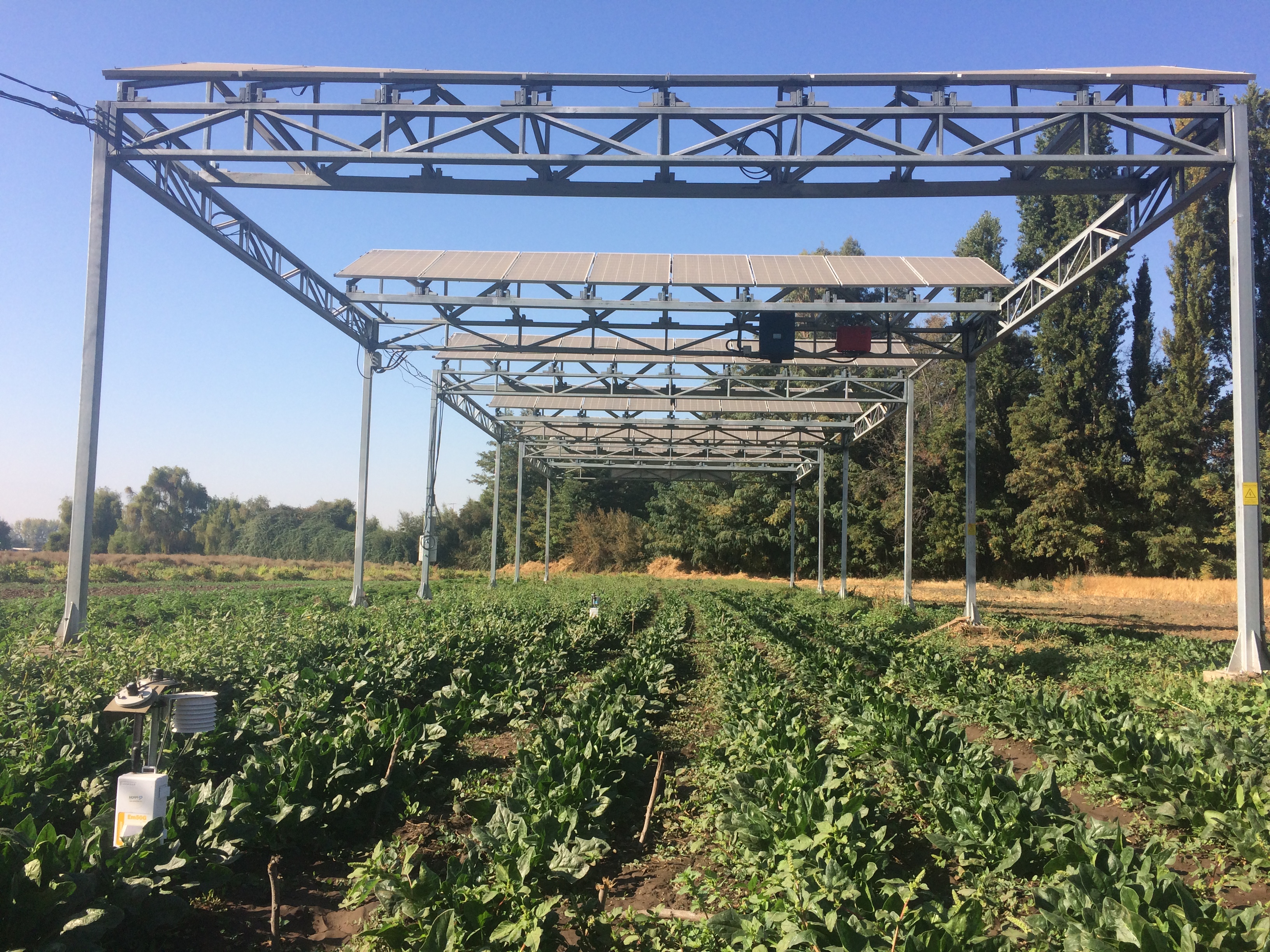Fraunhofer's photovoltaic project in Chile seeks to solve sunstrokes on agricultural land
• The scientific initiative, led by Fraunhofer Chile's Center for Solar Energy Technologies, will make it possible to achieve a double use of the land, providing shade with PV panels to agricultural crops, and at the same time, providing solar energy for the production of small and medium-sized farmers.
"Oasis de Lampa" is an agricultural company dedicated to the cultivation of Gourmet products for salads, such as vegetables, leaves and sprouts, alone or in fine mixtures. Owned by the married couple Rosa Chaparro and Ricardo Roth, this medium sized company was born in 2006 in the commune of Lampa. With their innovative products, today they have more than 50 important clients, among them Líder, Jumbo, Tottus, Unimarc, among others.
Seeking to reduce its production costs, improve energy efficiency, and better protect the crops and sowings in the five hectares of land, this agricultural company - with the support of the Fraunhofer Chile Solar Energy Technology Center (FCR CSET) and DMC Consultants -, was awarded a project financed by CORFO through the Súmate a Innovar Contest, through which it intends to integrate photovoltaic (PV) solar technologies in agriculture as a solution to sunstroke through partial shade with double use of soil.
Preventing damage from sunstroke
As explained by Francys Bustos, Head of Quality Assurance at Lampa Oasis, "the climate changes and fluctuations in environmental temperatures that are evident in the changes of season (spring-summer) undoubtedly generate organoleptic modifications in lettuce varieties that are prone to "Bolting" (rise in the crop, i.e. generation of flower stems and seeds). In addition, it should be considered that inadequate growth temperatures (Tº above 21ºC accelerate the deterioration of the leaves due to the accumulation of bitter latex in its vascular system)".
He added that exposure to high temperatures is commonly associated with water stress. "Perspiration accentuated by high temperatures can produce temporary wilting that can lead to plant death. Having to consume its own reserve substances can lead to death by starvation. These high temperatures produce alterations in the physiological functions. The high intensity of light and heat can affect the destruction of chlorophyll in the leaves. The leaves of the sunny part of the plant or those that receive a high temperature can exhibit tissue death at their edges or in large areas between the veins. These conditions predispose the damaged area to fungal attack," she said.
A double solution
The Project Director and researcher of the FCR CSET, Patricia Gese, explained that "Oasis de Lampa seeks to solve, in an efficient and harmonious way, the damages generated in crops by sunstrokes and to reduce energy costs. For this purpose, the FCR-CSET proposes to integrate photovoltaic (PV) panels in agriculture (Agrivoltaic Project) as a solution to shade requirements, considering the need for shade/crop light located under the panels. This will allow the generation of electricity with solar energy on the same agricultural land, for self-consumption and whose surplus can be injected into the electric network".
In this context, the project will allow the evaluation of the use of PV in the agricultural production in the lands of Oasis de Lampa, by means of the study of technical-economic aspects to protect the crops from the sun, to diminish losses and to produce electricity increasing the competitiveness of the company. In addition, the partner DMC will evaluate legal aspects and financing options. "Together, new business models are developed, generating economic indicators that allow Oasis de Lampa to select a solution optimized to its needs," said Gese.
To date, the FCR CSET team has already carried out a characterization of the agricultural land and its processes, including measurements of electricity consumption, which currently allows the development of different techno-economic scenarios optimized to the needs of the company with promising projections regarding the possibilities of this photovoltaic and agricultural integration, demonstrating that NCRE allows companies to take advantage of these new technologies in the different areas of the business.
 Fraunhofer Chile Research
Fraunhofer Chile Research


